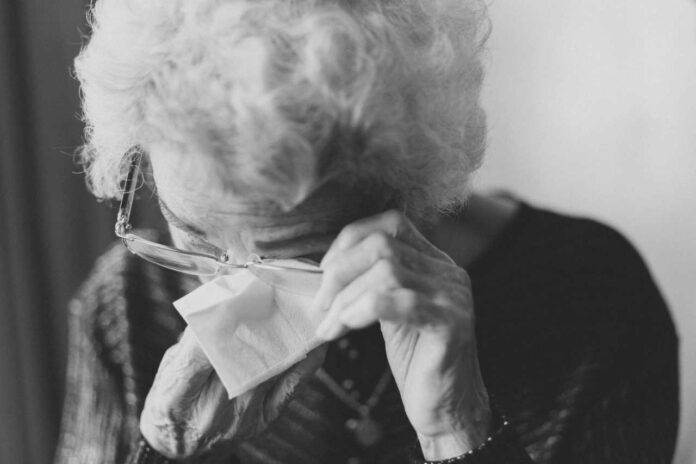The Importance of Wearing the Right Bra While Breastfeeding
Breastfeeding is a natural and beautiful bonding experience between a mother and her baby. However, for first-time mothers, it can also be a bit overwhelming and intimidating. As World Breastfeeding Week approaches, it’s essential to address some common concerns and provide guidance on one crucial aspect of breastfeeding: wearing the right bra. In collaboration with lingerie experts at Next, midwife and breastfeeding consultant Lucy Webber shares valuable advice on bra selection and hygiene during the breastfeeding journey.
Understanding the Impact of Ill-Fitting Bras
Wearing a bra while nursing is perfectly safe and practical, as long as it fits correctly and feels comfortable. However, many women underestimate the importance of wearing the right bra during this time. Lucy Webber emphasizes the potential risks associated with ill-fitting bras, such as blocked ducts and mastitis.
Blocked or clogged milk ducts can cause significant discomfort, including pain, swelling, and itchiness. If left unaddressed, a blocked duct can lead to mastitis, an inflammation of the breast tissue. Mastitis can be incredibly painful and may even cause flu-like symptoms. In severe cases, it can lead to an infection, requiring antibiotics for treatment. Symptoms of mastitis include breast tenderness, redness, feeling achy, and a high temperature.
The Impact of Wired Bras on Breast Health
While the importance of wearing a well-fitting bra is clear, it’s crucial to address the specific concern of wired bras. Lucy Webber advises against wearing wired bras, particularly if they are the wrong size. It’s a well-known fact that a significant percentage of people wear bras that don’t fit properly, which can potentially lead to blocked ducts and mastitis.
During the early postpartum weeks and months, breast size can fluctuate, making wired bras a less suitable option. However, once your bra size has stabilized, a wired bra may be acceptable if it fits correctly. It’s important to regularly assess any changes in breast size to ensure you’re wearing the right bra throughout your breastfeeding journey.
Choosing the Right Bra for Breastfeeding
Now that we understand the potential risks of wearing the wrong bra, let’s explore the options for finding the right bra for breastfeeding. Lucy Webber recommends two types of bras: regular, well-fitting bras and nursing bras.
Regular, Well-Fitting Bras
A regular, well-fitting bra can be a suitable choice for breastfeeding, provided it meets certain criteria. Firstly, ensure that the bra provides sufficient support and comfort. Look for bras with adjustable straps and a wide band under the bust for added support. Additionally, opt for bras made from breathable and stretchable materials to accommodate any changes in breast size throughout the day.
Nursing Bras
Nursing bras are specially designed to facilitate breastfeeding. They feature convenient clasps or hooks that allow easy access to the breasts for feeding. Nursing bras provide excellent support and comfort while ensuring easy latch-on during nursing sessions. They come in a variety of styles, including non-wired and seamless options, providing flexibility and comfort for every breastfeeding mother.
When choosing a nursing bra, consider factors such as adjustable straps, breathable fabrics, and the ability to accommodate breast size fluctuations. It’s recommended to invest in multiple nursing bras to ensure you always have a clean and comfortable option available.
Maintaining Good Breast Health and Hygiene
In addition to wearing the right bra, maintaining good breast health and hygiene is crucial during breastfeeding. Here are some essential tips to keep in mind:
Proper Breastfeeding Positioning
Ensure you are positioning your baby correctly during breastfeeding. Improper positioning can lead to discomfort and potential breast issues. Seek guidance from a lactation consultant or breastfeeding specialist if you need assistance in finding the best position for you and your baby.
Frequent Feeding and Expressing Milk
Frequent feeding is essential to prevent engorgement and blocked ducts. It’s important to respond to your baby’s hunger cues and feed on demand. Additionally, if you’re unable to breastfeed your baby directly, expressing milk using a breast pump can help maintain milk supply and prevent engorgement.
Gentle Breast Massage and Warm Compresses
If you experience any discomfort or notice a blocked duct, gentle breast massage can help alleviate the issue. Massaging the affected area towards the nipple can encourage milk flow and relieve pressure. Applying warm compresses to the breast before feeding or expressing milk can also help soften the breast tissue and unblock any clogged ducts.
Avoid Tight Clothing and Underwire
In addition to wearing the right bra, it’s important to avoid tight clothing that compresses the breasts. Tight clothing can hinder milk flow and contribute to blocked ducts. Similarly, underwire bras can restrict milk flow and increase the risk of mastitis. Opt for loose-fitting and breathable clothing that allows your breasts to move freely.
Maintain Cleanliness and Dryness
Keeping your breasts clean and dry is essential for maintaining good hygiene. After each feeding or expressing session, gently clean your nipples and the surrounding area with warm water. Pat them dry with a clean towel or allow them to air dry. Avoid using harsh soaps or alcohol-based products that can dry out the skin and cause irritation.
Seeking Medical Attention
While taking precautions and maintaining good breast health can significantly reduce the risk of complications, it’s essential to seek medical attention if you experience persistent symptoms or concerns. If symptoms of a blocked duct or mastitis do not improve within 12 to 24 hours after home treatment, consult your healthcare provider for further evaluation and guidance.
Remember, breastfeeding is a beautiful and natural journey between you and your baby. By wearing the right bra, maintaining good breast health and hygiene, and seeking professional advice when needed, you can ensure a comfortable and fulfilling breastfeeding experience for both you and your little one.


